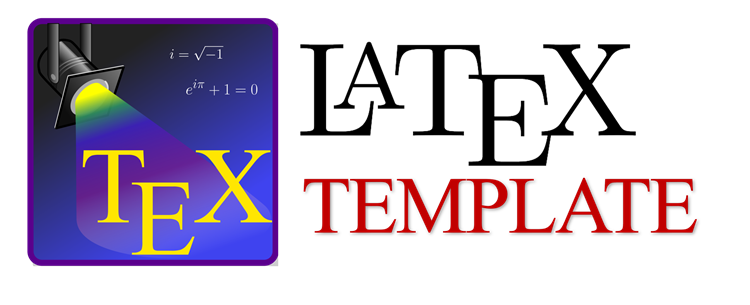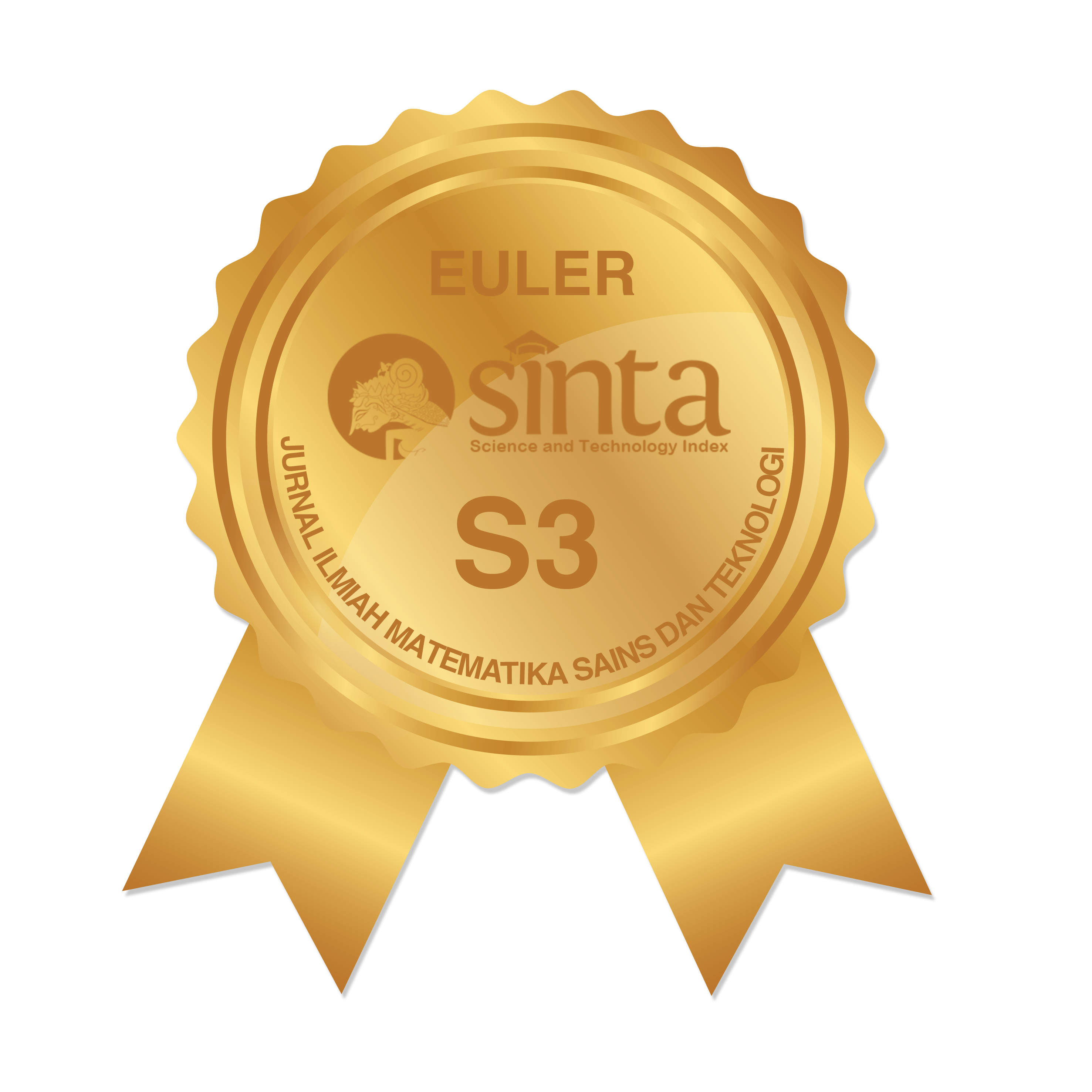Proses Analogi Siswa Sekolah Dasar dalam Mengajukan Masalah Luas Daerah
Abstract
Keywords
Full Text:
PDFReferences
E. A. Silver, "On mathematical problem posing" For the Learning of Mathematics, vol. 14, no. 1, pp. 19-28, 1994, [Online]. Available: https://www.jstor.org/stable/40248099.
H. Palmér and J. van Bommel, "Young students posing problem-solving tasks: what does posing a similar task imply to students?" ZDM - Math. Educ., vol. 52, no. 4, pp. 743-752, 2020, doi: 10.1007/s11858-020-01129-x.
M. Niss and T. Højgaard, "Mathematical competencies revisited" Educ. Stud. Math., vol. 102, no. 1, pp. 9-28, 2019, doi: 10.1007/s10649-019-09903-9.
A. P. Rustini and T. Y. E. Siswono, "Kualitas pengajuan masalah matematika siswa ditinjau dari ber-IQ superior" J. Cendekia J. Pendidik. Mat., vol. 4, no. 2, pp. 835-844, 2020, doi: 10.31004/cendekia.v4i2.261.
D. Bevan and M. M. Capraro, "Posing creative problems : a study of elementary students ' mathematics understanding" Int. Elect. J. Math. Ed., vol. 16, no. 3, p. em0654, 2021, doi: 10.29333/iejme/11109.
K. J. Holyoak, "Analogy and relational reasoning" in Oxford Handb. Think. Reason., 2012, pp. 234-259. doi: 10.1093/oxfordhb/9780199734689.013.0013.
M. E. Gray and K. J. Holyoak, "Teaching by analogy: from theory to practice" Mind, Brain, Educ., vol. 15, no. 3, p. 5, 2021, doi: 10.1111/mbe.12288.
K. Khotimah and S. Sutirna, "Analisis Kemampuan Analogi Matematis Siswa pada Materi Segiempat" MAJU J. Ilm. Pendidik. Mat., vol. 8, no. 1, pp. 343-349, 2021.
H. A. Wulandari, C. Utami, and M. Mariyam, "Analisis kemampuan penalaran analogi matematis ditinjau dari motivasi belajar siswa pada materi kubus dan balok kelas Ix" JPMI (Jurnal Pendidik. Mat. Indones., vol. 6, no. 2, pp. 91-99, 2021, [Online]. Available: https://journal.stkipsingkawang.ac.id/index.php/JPMI/article/view/2676.
A. Quroidah and M. F. Amir, "Student Spatial Structure in Realistic Mathematics Education (RME) Approach" Indones. J. Educ. Methods Dev., vol. 14, pp. 1-8, 2021, doi: 10.21070/ijemd.v14i.593.
M. H. Wickstrom, E. W. Fulton, and M. A. Carlson, "Pre-service elementary teachers ' strategies for tiling and relating area units" J. Math. Behav., vol. 48, June 2016, pp. 112-136, 2017, doi: 10.1016/j.jmathb.2017.05.004.
Z. Zeybek and D. I. C. Francis, "Cut the cake" Teach. Child. Math., vol. 23, no. 9, pp. 542-548, 2017.
K. Kojima, K. Miwa, and T. Matsui, "Experimental study of learning support through examples in mathematical problem posing" Res. Pract. Technol. Enhanc. Learn., vol. 10, no. 1, pp. 1-18, 2015. doi: 10.1007/s41039-015-0001-5.
L. D. English, "The development of fifth-grade children's problem-posing abilities" Educational Studies in Mathematics, vol. 34, pp. 183-217, 1997. https://doi.org/10.1023/A:1002963618035.
J. P. Mestre, "Probing adults' conceptual understanding and transfer of learning via problem posing" J. Appl. Dev. Psychol., vol. 23, no. 1, pp. 9-50, 2002, doi: 10.1016/S0193-3973(01)00101-0.
K. Kojima, K. Miwa, and T. Matsui, "Supporting mathematical problem posing with a system for learning generation processes through examples" Int. J. Artif. Intell. Educ., vol. 22, no. 4, pp. 161-190, 2013, doi: 10.3233/JAI-130035.
M. F. Amir, "Learner-generated drawings by students with mathematical learning difficulties in finishing open number sentences" J. Elem., vol. 8, no. 1, pp. 216-230, 2022, doi: 10.29408/jel.v8i1.4556.
M. D. Hicks, "Developing a framework for characterizing student analogicalactivity in mathematics" Mathematical Processes and Modeling, pp. 914-921, 2020.
L. E. Richland, K. J. Holyoak, and J. W. Stigler, "Analogy use in eighth-grade mathematics classrooms" Cogn. Instr., vol. 22, no. 1, pp. 37-60, 2004, doi: 10.1207/s1532690Xci2201_2.
I. Peled, "The role of analogical thinking in designing tasks for mathematics teacher education: An example of a pedagogical ad hoc task" J. Math. Teach. Educ., vol. 10, no. 4-6, pp. 369-379, 2007, doi: 10.1007/s10857-007-9048-6.
A. B. I. Bernardo, "Analogical problem construction and transfer in mathematical problem solving" Educ. Psychol., vol. 21, no. 2, pp. 137-150, 2001, doi: 10.1080/01443410020043841.
N. Fatimah and A. I. Imami, "Analisis penalaran analogi siswa dalam menyelesaikan masalah phytagoras pada siswa SMP kelas VIII" MAJU J. Ilm. Pendidik. Mat., vol. 8, no. 2, pp. 448-454, 2021.
S. Sarjoko, D. Demitra, and R. Rinawati "Penguasaan penalaran analogi dalam pemecahan masalah unsur-unsur dan luas kubus" vol. 8, no. 1, pp. 1-15, 2020. doi: 10.20527/edumat.v8i1.7631.
K. Kristayulita, T. Nusantara, A. R. As'ari, and C. Sa'dijah, "Schema of analogical reasoning-thinking process in example analogies problem" Eurasian J. Educ. Res., vol. 2020, no. 88, pp. 87-104, 2020, doi: 10.14689/ejer.2020.88.4.
J. W. Cresswel and C. N. Poth, Qualitative iquiry & research design, 4th ed. London: Sage publication, Inc., 2007.
J. W. Creswell, Educational research : planning, conducting and evaluating, quantitative and qualitative research, 4th ed. Boston: Pearson, 2012.
D. Gentner and K. D. Forbus, "Computational models of analogy" Wiley Interdiscip. Rev. Cogn. Sci., vol. 2, no. 3, pp. 266-276, 2010, doi: 10.1002/wcs.105.
A. Fitri and N. Afifah, "Pengaruh pengajuan dan pemecahan masalah (jucama) terhadap kemampuan berpikir kreatif matematika siswa kelas IV sekolah dasar" Buana Ilmu, vol. 4, no. 1, pp. 151-159, 2019, doi: 10.36805/bi.v4i1.897.
E. A. Silver, "Fostering creativity through instruction rich in mathematical problem solving and problem posing" Zentralblatt für Didakt. der Math., vol. 29, no. 3, pp. 75-80, 1997, doi: 10.1007/s11858-997-0003-x.
A. Yani T. and S. Oikawa, "Increasing creative and innovative thinking ability through the strengthening of character education in probability theory course" JETL (Journal Educ. Teach. Learn., vol. 4, no. 1, p. 163, 2019, doi: 10.26737/jetl.v4i1.990.
P. Anggareni and A. F. Hidayat, "Identifikasi tahapan proses berpikir kreatif siswa SMP dalam aktivitas pengajuan masalah matematika" Kreano, J. Mat. Kreat., vol. 10, no. 2, pp. 132-140, 2019, doi: 10.15294/kreano.v10i2.18818.
A. S. Wahyuni, T. Y. E. Siswono, and N. Mariana, "Profil berpikir kreatif siswa sekolah dasar dalam mengajukan masalah matematika konteks museum gubug wayang" J. Basicedu, vol. 6, no. 1, pp. 759-766, 2022, doi: 10.31004/basicedu.v6i1.2093.
M. A. Maulyda, A. N. K. Rosyidah, and V. R. Hidayati, "Elementary school students' mathematical connection in problem-posing activities" J. Elem., vol. 8, no. 1, pp. 99-116, 2022, doi: 10.29408/jel.v8i1.4364.
M. M. Aba and T. Nusantara, "Berpikir kreatif dalam pengajuan masalah matematis" J. Pendidik. Mat. dan Sains, vol. 8, no. 1, pp. 11-15, 2020, doi: 10.21831/jpms.v8i1.19637.
R. J. Sternberg, The psychology of problem solving. Cambridge: Cambridge University Press, 2003.
DOI: https://doi.org/10.34312/euler.v11i1.20046
Refbacks
- There are currently no refbacks.
Copyright (c) 2023 Firdatus Nurlaila, Mohammad Faizal Amir

This work is licensed under a Creative Commons Attribution-NonCommercial 4.0 International License.
Euler : Jurnal Ilmiah Matematika, Sains dan Teknologi has been indexed by:
EDITORIAL OFFICE OF EULER : JURNAL ILMIAH MATEMATIKA, SAINS, DAN TEKNOLOGI |
 | Department of Mathematics, Faculty of Mathematics and Natural Science, Universitas Negeri Gorontalo Jl. Prof. Dr. Ing. B. J. Habibie, Tilongkabila, Kabupaten Bone Bolango 96554, Gorontalo, Indonesia |
 | Email: [email protected] |
 | +6287777-586462 (WhatsApp Only) |
 | Euler : Jurnal Ilmiah Matematika, Sains dan Teknologi (p-ISSN: 2087-9393 | e-ISSN:2776-3706) by Department of Mathematics Universitas Negeri Gorontalo is licensed under a Creative Commons Attribution-NonCommercial 4.0 International License. Powered by Public Knowledge Project OJS. |















